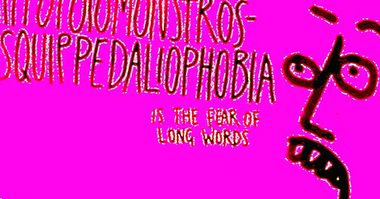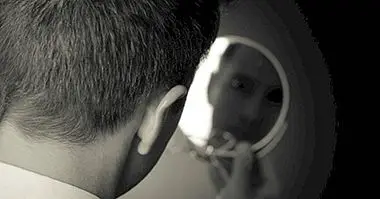Anxiety: symptoms, causes and possible treatments
Anxiety is an affective state that causes discomfort , feeling of suffocation, mental suffering and even sadness. It is related to fear (irrational fear), despair and, in many cases, uncertainty. Fear of separation, harassment at school or at work or irrational and intrusive thoughts, among other situations, can cause distress.
It is frequent that the term anguish is confused with anxiety. In this article we will discuss the differences between both concepts and we will go deeper into the causes, symptoms and possible treatments of anguish.
- Related article: "Combat anxiety: 5 guidelines to reduce stress"
Differences between anxiety and anxiety
It is not easy to understand the difference between anguish and anxiety , because they are terms that are often used as synonyms in many occasions. There are authors who consider that the difference is that while anxiety is used in the clinical setting, the anguish has a rather philosophical origin, and is especially important in existentialism. For example, Heidegger and Kierkegaard already used the term, and the French philosopher Jean-Paul Sartre spoke about anguish in his book "L'Être et le Néant" (1943).
However, in psychology (or psychiatry) Sigmund Freud also spoke of "realistic anguish" and "neurotic anguish" referring to the latter as a pathological state. At present, for many, the line between anxiety and anguish remains unclear.
There is no consensus regarding the difference
And is that despite the attempts to distinguish these concepts by philosophers, doctors and psychologists, these terms are still confused today and are used as synonyms in many cases. Some authors have considered that physical symptoms prevail in anguish, while in anxiety the psychological ones prevail (although this distinction between symptoms is even more confusing).
It has also been considered that anguish has a paralyzing effect on the individual, while anxiety triggers a motor startle reaction. However, at present, when talking about anxiety, both physical and psychological symptoms are taken into account.
A clear example of how these concepts are used interchangeably is when panic disorder is mentioned, it is also called an anxiety crisis or an anguish disorder. As stated by Manuel Suárez Richards in his book Introduction to Psychiatry (1995): "Both terms are used as synonyms nowadays, since they are taken into account that they are unpleasant psychological states that present physiological symptoms in a habitual way, and they are characterized by the painful expectation before a little precise danger ".
Therefore, in this article we will refer to anguish as synonymous with anxiety, which causes great discomfort in the person who suffers it and in which there is not only a physiological and physical reaction, but also a psychological one.
- Maybe you're interested: "Types of Anxiety Disorders and their characteristics"
What is anguish?
While anxiety and anguish stand out by resembling fear , they are different from the latter in the sense that fear manifests itself before present stimuli, and anxiety or anguish in anticipation of future dangers, indefinable, unpredictable and even irrational.
The anguish can be adaptive and useful, in the sense that it is a normal reaction in our day to day, and even becomes beneficial in certain contexts. For example, when crossing a road with the red light, it keeps us alert so that they do not run over us.
But if we think of an anxiety crisis or an anguish disorder , the person has a reaction of disproportionate anguish, which paralyzes the individual, and in which the presence of psychic symptoms such as the sensation of drowning and imminent danger, which have nothing to do with reality. That is why it can be considered a psychopathology.
Its causes
This situation of anguish not only appears acutely as in the case of panic disorder , but there are other factors that can lead to suffer it. For example, when we are not clear about our future and we enter into an existential crisis that lets us sleep thinking about how we will solve the problem. For the anguish to occur, biological, psychological (and existential) and environmental factors come into play. That is why philosophers, poets, psychologists and psychiatrists have been interested in this phenomenon throughout history.
Generally the anguish appears in situations in which the person faces difficult situations , where there is a threatening element (physical or psychological), but also in those situations in which the person does not see clearly the path to follow and, therefore, lives a situation of uncertainty.
At a biological level, there are also studies that affirm that genetic predisposition is present in this condition , and that some neurochemicals play an important role in the anguish.
For example, an increase in adrenaline or a reduction of gamma-aminobutyric acid (GABA). Finally, some environmental causes such as difficulties in social relationships or bad daily habits, among others, can precipitate the appearance of anguish.
symptom
Anxiety presents a series of characteristic symptoms . They are the following:
- Worries and excessive fears.
- Imagination of catastrophic scenarios.
- Despair.
- Shortness of breath, dizziness, sweating, muscle tension, dry mouth or fatigue.
- Chest tightness.
- Suffocation.
- Avoidance of feared situations.
- Difficulties to sleep.
Possible treatments
The problems of anguish are very frequent in our days and, without a doubt, the most effective treatment to solve it is to go to psychological therapy.
Psychologists are professionals trained to deal with this type of problem , which can help patients discover the underlying causes of their worries and fears; and they can provide them with certain tools that help them relax and look at situations from a new perspective. They can also help them develop better coping and problem solving skills.
Psychological therapy for anguish problems it is usually short, because patients improve in 8 or 10 therapeutic sessions. Cognitive behavioral therapy has proved very effective as a therapeutic model in the treatment of anxiety disorders, but other types of psychotherapy are also effective, such as acceptance and commitment therapy or mindfulness-based cognitive therapy (MBCT).
In extreme cases, the use of drugs It can be a good help as a complement to psychological treatment, especially in situations where it is necessary to reduce symptoms quickly, such as for treating an anxiety disorder. However, the administration of drugs should never be the only therapeutic option chosen, and always begins by medical indication.
- If you want to deepen the treatment of anxiety, you can read this article: "6 effective treatments against anxiety."



















